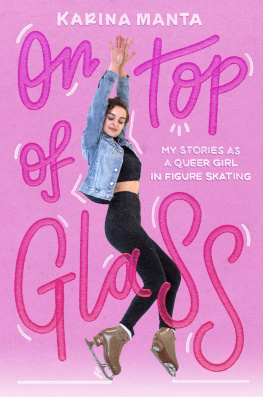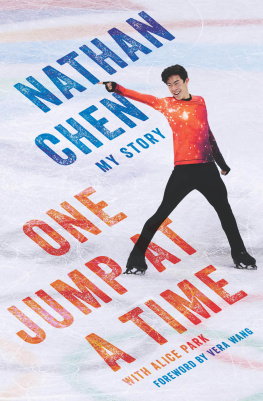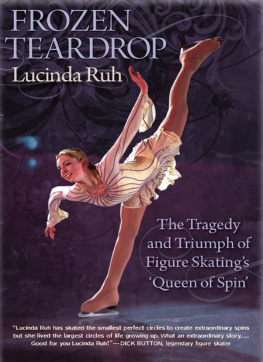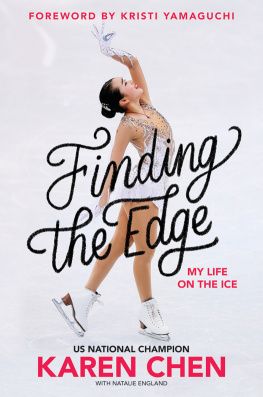
In memory of a great woman of figure skating,
my mother.
Picture Credits: Page 10 Authors collection; 269 by William Udell. For Sports Illustrated: Pages 14, 24, 36, 176, 270 by Richard Mackson; 20 (upper right), 156, 190, 282, 284 by Manny Millan; 20 (bottom) by Ronald C. Modra; 126, 134, 181, 278 bottom by Bill Eppridge; 185 by Jerry Cooke; 278 (top) by Eric Schweikardt, 281 by Tony Tomsic. Cover and all other photographs by Heinz Kluetmeier.
SPORTS ILLUSTRATED FIGURE SKATING: CHAMPIONSHIP TECHNIQUES. Copyright 1989 by Time Inc. All rights reserved. Printed in the United States of America. No part of this book may be used or reproduced in any manner whatsoever without written permission except in the case of brief quotations embodied in critical articles and reviews. For information address Sports Illustrated Winners Circle Books, Time & Life Building, 1271 Avenue of the Americas, New York, N.Y. 10020
FIRST EDITION
Designer: Kim Llewellyn
Library of Congress Cataloging-in-Publication Data
Petkevich, John Misha.
Sports illustrated figure skating: championship techniques/by John Misha Petkevich; photography by Heinz Kluetmeier.1st ed.
p. cm.(Sports illustrated winners circle books)
1. Skating. I. Sports illustrated (Time, inc.) II. Title.
III. Title: Figure skating. IV. Series.
GV850.4.P48 1988
796.91dc19
ISBN 978-1-56800-070-1
Contents

FIGURE SKATING
Championship Techniques
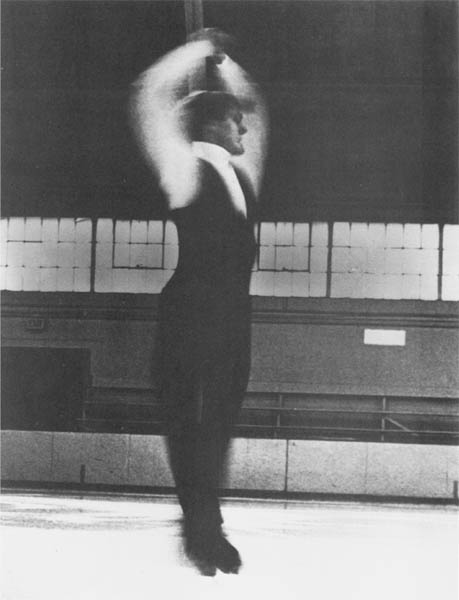
The author practicing what he preaches, as a competitive figure skater in 1966.
Introduction
Writing this book has been one of the most enjoyable experiences I have ever had. As I wrote, I was able to relive all the sensations and experiences of my own skating career. This has been particularly important to me for the following reasons:
First, I simply loved to skate, and I have always relished any opportunity to revisit skating.
Second, I made a decision in 1972, following the Olympic Games and the World Championships, to leave skating and to devote my energies to new endeavors. I knew that my many other interests would permit me only enough time to maintain the level of skating expertise I had achieved. Since I was interested in improvement as a skater, not just maintenance, a clean break from skating was the only solution. I returned to the ice only on very special occasions. Although I have remained in close contact with the sport as a television commentator, advisor, coach, and founder of An Evening with Champions (a skating show at Harvard University that raises money for The Dana Farber Cancer Foundation), working on this book gave me the chance to immerse myself in skating once again.
Finally, I wanted to share my insights into skating technique with future skaters. This knowledge has developed over many years of analyzing skating and consulting with some of the best technicians in the sport, and represents a distillation of the many theories and practices prevalent in the skating world. It is, I hope, a compilation of the best, most up-to-date techniques derived from the basic physical principles that have always governed figure skating.
A WORD OF THANKS
Many people have contributed to this booksome directly, others indirectly. To name all of those who have had some influence would require another volume, and I would inevitably leave someone out. So, I shall mention only those individuals who have had a direct involvement in the book, or whose theories and techniques are found throughout its text.
The two coaches who exerted the greatest influence on my understanding of technique were Arthur Bourque, my coach during the peak years of my skating career, and Gustav Lussi, my technical consultant during the final 18 months of my amateur skating career. Arthur taught me the basics as well as how to leap higher than I thought possible, plus the benefits of drive, persistence, and training. He stood by me through the last eight years of my career and allowed me to consult with other coaches regarding their approach to technique. Gus, on the other hand, taught me the fundamental physical principles of skating and how to apply them. He encouraged analysis and thought. Although my time with Gus was brief, it was full and thorough. His 30-year contribution to skating in general was immense.
My skating career would not have been possible without the support of my parents. They made many sacrifices to provide me with the opportunities to develop my talents; their limitless selflessness is a tribute to them and a sterling example to others. True love of parent for child could not be expressed in a more poignant way.
With respect to writing this book, several individuals have been most helpful. Tracie Brown, whose picture appears throughout the book, took time out of her hectic training schedule to execute many of the basic moves described and illustrated here. Her impeccable line and style made the photography session a delight. Brian Boitano, the 1988 Olympic Gold Medalist, performed the most difficult maneuvers in figure skating during a photographic session. Even the quadruple toe loop is included in the book. Without the talent of Heinz Kluetmeier, the man with the magic sports-photo lens, the beauty and precision of Tracie and Brian could not have been captured. His magnificent photos have been incorporated for nearly all of the instructional segments of the book. Benjamin T. Wright contributed a great deal of information and perspective on the historical aspects of skating. Bill Jaspersohn, my editor, has been encouraging, understanding, and insightful. His clear vision for the book provided the guiding light. My faithful secretary, Cathy Barlow, did wonders with my copious notes, corrections, inserts, and amendments.
Finally, Sports Illustrated Figure Skating: Championship Techniques would not have materialized without the loving understanding of my family. Throughout vacations and during my spare time after long work hours, I became a prisoner of the thoughts contained here. My wife, Mary, gracefully endured many quiet nights and several virtually conversationless vacations. My beautiful children, Jonathan, Lisa, and Michelle, allowed me to be absent from their side without any diminution in their love and affection. Michelle has gone so far as to incorporate the techniques contained in this book in her own skating, providing me with an ideal empirical model. In the end, family teamwork produced this work.
FOR THE LOVE OF IT
There is only one good reason to learn how to skate, and that is for the sheer fun of it. Certainly you may have other reasons, quite good ones in fact; but if you dont love the idea of gliding on ice, if you are not thrilled by the thought of leaping into the air, or if the image of a cold wind biting your cheeks as you fly around the rink does not send welcome shivers up your spine, then skating is not for you. If you start skating in search of its pleasures and thrills, youll find unimagined fulfillment.
I can vividly remember my first few years on the ice, when I was hardly an example of a disciplined and goal-oriented skater. For me it was fun and games: the speed, the feeling of jumping and rotating in the air, andbelieve it or notthe sensation of falling.
Next page


